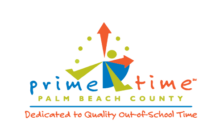All Day
Over the last 5 years, Prime Time has helped the JASE program become a successful afterschool program in Martin County. We are thankful for the variety of trainings offered, yearly actions plans and multiple site visits.
Afterschool ProfessionalMartin County Parks and Recreation
SEL Basics Onboarding (Virtual, Self-Paced, One Hour Session)
Description:
What does Social and Emotional Learning (SEL) really mean? In this self-paced virtual training, participants will be able to develop a foundational understanding of SEL, including an introduction to common language and structures used in SEL frameworks to guide effective implementation in OST settings. Participants also reflect upon why SEL is important in their personal lives and in the lives of peers and youth through interactive self-awareness practices, journaling and self-check exercises.
Prerequisites: Afterschool professionals and youth serving organizations.
Live Session Time: 1 hours Session Materials: None
Core Competencies Addressed: Core Knowledge Area- Child/Youth Growth and Development 1C: Use Developmental Knowledge to Create Healthy, Respectful, Supportive and Challenging Environments- Entry level and level 1
Primary QIS Scales Addressed – Supportive Environment: II-L.: Manage Feelings; Interaction: III-M: Sense of Belonging
SELOC Items Addressed: All (Introductory)
This self-paced one-hour virtual training session will be available for completion within a seven day period. Please note you must complete the session in one sitting within the start and end date window below:
Training Objectives
- Explore the meaning of “Social and Emotional Learning” and brainstorm what SEL looks and feels like in a personal experience
- Learn the benefits of SEL for adults and children through a review of scientific findings and reflection on a SEL practice
- Define and explain the SEL competencies from the CASEL and Weikart framework
- Review the three four of SEL implementation – adult SEL practice, explicit instruction, and integration/infusion program-wide
Training Outcomes
- Define the meaning of “Social and Emotional Learning” and relate to a personal “SEL experience”
- Name three benefits of why SEL is important for adults and/or children
- Identify the five CASEL SEL Competencies and the six Weikart SEL domains
- Give an example of each of the four areas of SEL implementation

